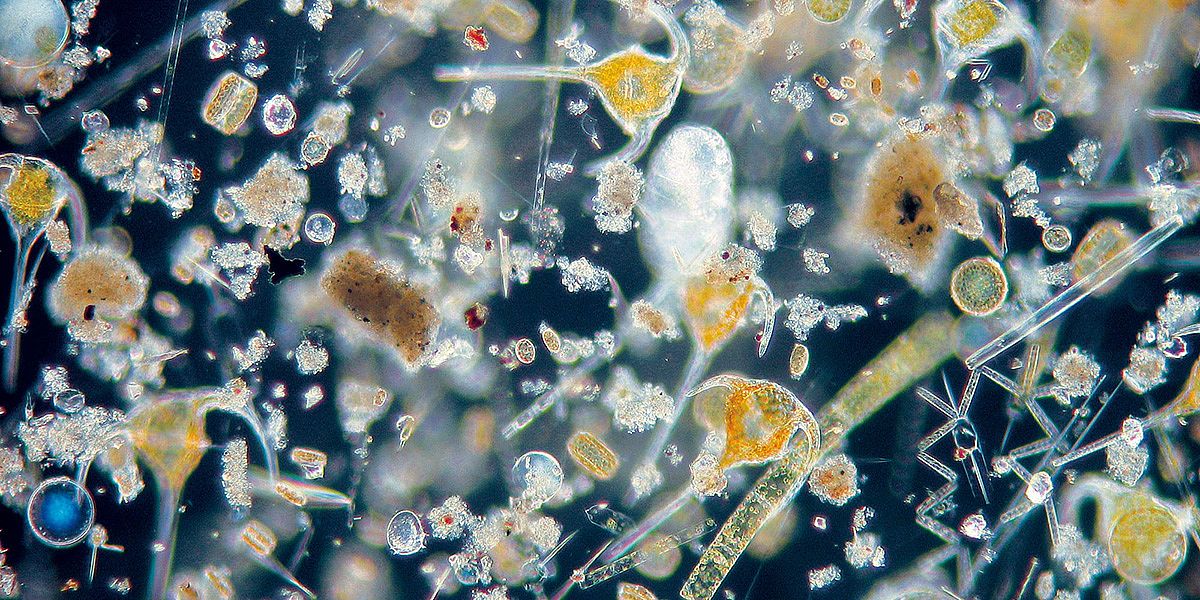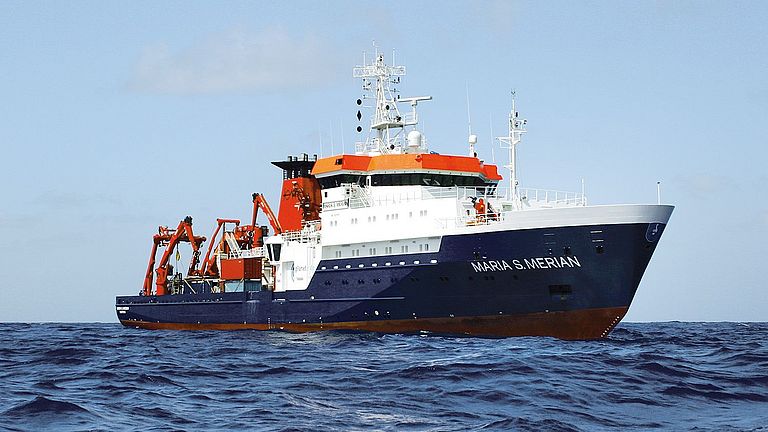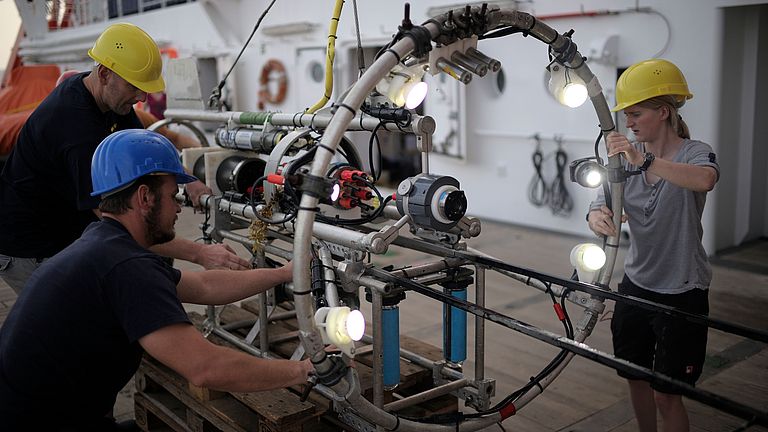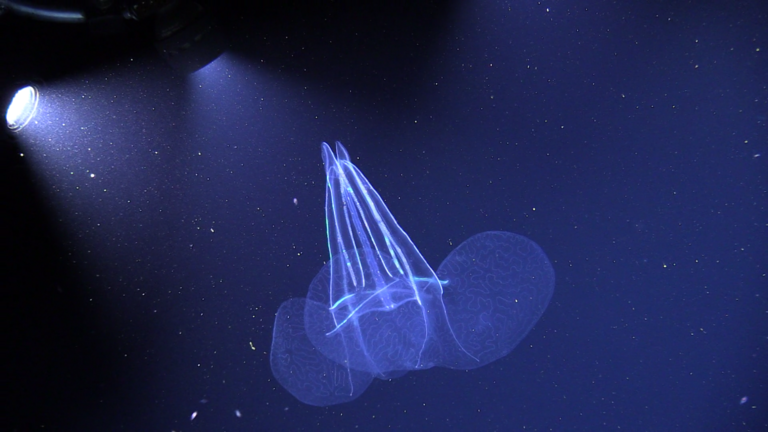“It is very likely that we will discover new species on this cruise,” says Dr Jan Dierking. The marine biologist from the GEOMAR Helmholtz Centre for Ocean Research Kiel is the chief scientist of the expedition MSM126 “Jellyweb Madeira” on the German research vessel MARIA S. MERIAN, which sets off tomorrow to explore the underwater habitats around Madeira. And his expectations are probably not too high, as the planned investigations will mainly focus on the deep sea, which is still largely unexplored. One reason for this is the extreme conditions: it is dark, cold and there is enormous pressure. Above all, the deep sea is deep. In combination, this means that sampling and observing deep-sea systems is extremely difficult.
During the MSM126 cruise, the international team of 22 scientists from five countries, including world-leading experts in various fields of research, will therefore use a wide range of state-of-the-art instruments and technologies, including remote sensing, camera systems, a deep-sea robot, oceanographic sensors and various nets, to shed light on deep-sea biodiversity and food webs.
“We will be using echosounders and towed cameras to map three areas around the island of Madeira,” explains co-expedition leader Dr Henk-Jan Hoving, “a deep-sea canyon, an extensive underwater plateau and a submarine ridge, from shallower depths of 50m down to 3000m”. The XOFOS (Ocean Floor Observing System) photo and video system will film and photograph the seafloor for mapping purposes. The deep-sea camera system PELAGIOS (Pelagic in Situ Observation System), equipped with a camera, light sources and sensors to measure environmental data, can be used day and night in the deep-water column to document organisms alive in their natural environment. Dr Hoving: “We hope to find layers with abundant and diverse life and previously undiscovered organisms and encounter underexplored habitats such as coral gardens or deep-sea reefs, and will then return to these areas for focussed sampling afterwards”.
For sampling, they have what Jan Dierking and Henk-Jan Hoving call the “Swiss army knife of marine research”: the ROV PHOCA, a remotely operated underwater robot that can dive down to depths of up to 2000m, and transmit live, high-definition video from the deep sea to the surface via a fibre-optic connection. It can be configurated with a variety of scientific instruments depending on the mission. During MSM126, it will be deployed both in open water and on the seabed. Floating in open water, a “slurp gun”, a kind of vacuum cleaner, will collect fragile gelatinous organisms – “a huge opportunity to bring up deep-sea species intact”. On the seabed, the ROV will sample sediments and benthic organisms including corals and sponges. It will also serve as a platform for experiments on so-called food falls, i.e. what sinks to the seafloor from the upper layers of the ocean. “We want to see how organisms in the open water are linked to the deep sea: Who eats whom, who competes with whom?” explains Dr Jan Dierking. “I am very excited to see what the eye on the seabed will reveal.”
A key question is what role gelatinous zooplankton, or jellyfish, play in the oceanic food web. Not much is known about this because jellyfish are difficult to study. They are very fragile and are difficult to capture intact in nets, so their importance in food webs is probably underestimated. “This group of organisms is very diverse,” explains Dr Henk-Jan Hoving, “some of them can grow to tens of metres in length. Some are predators, feeding on crustaceans, fish or other gelatinous organisms. Others rely on detritus, the dead and decaying material that is abundant in the water column”.
Improving our understanding of the food web of jellyfish, also known as the jelly web, is essential to our understanding of marine food webs. Dr Dierking explains: “The jelly web probably plays a crucial role in the processing of organic matter, because jellyfish can occur in large numbers, and when such a ‘jelly bloom’ dies, potentially a large amount of this biomass sinks. But for many regions, including Madeira, we don't know how much of it actually reaches the seabed or who feeds on it”. The contribution of the jelly web to the export of carbon to the deep sea could be significant.
On Madeira itself, the expedition is generating a lot of public interest. For example, there will be a live Q&A session on board for schoolchildren, who will be able to look over the scientists' shoulders as they work. Dr Dierking: “There is a big effort in Madeira to increase the knowledge of the deep sea in order to better protect it”. He hopes that the data gathered during the expedition will not only fill knowledge gaps, but also make a concrete contribution to the protection of habitats and biodiversity in the sea around Madeira.
The jelly web was the focus of the EU Horizon 2020 project GoJelly (coordinated by Jamileh Javidpour, University of Southern Denmark, in which GEOMAR was a core partner), which sparked the idea for the MSM126 expedition. Its results will now be exploited via the collaborations with partner institutes of the cruise, and will provide the foundation to pursue deep sea work with the Regional Agency for the Development of Research, Technology and Innovation (ARDITI) Madeira in the future.
Expedition at a Glance:
RV MARIA S. MERIAN Expedition MSM126
Name: Jellyweb Madeira
Region: Central East Atlantic
Chief Scientists: Dr Jan Dierking, Dr Henk-Jan Hoving
Start: 09 February 2024, Funchal (Portugal)
End: 04 March 2024, Las Palmas (Spain)
Project Funding:
The expedition is funded by the German Federal Ministry of Education and Research (BMBF), and the German Research Foundation (DFG).






